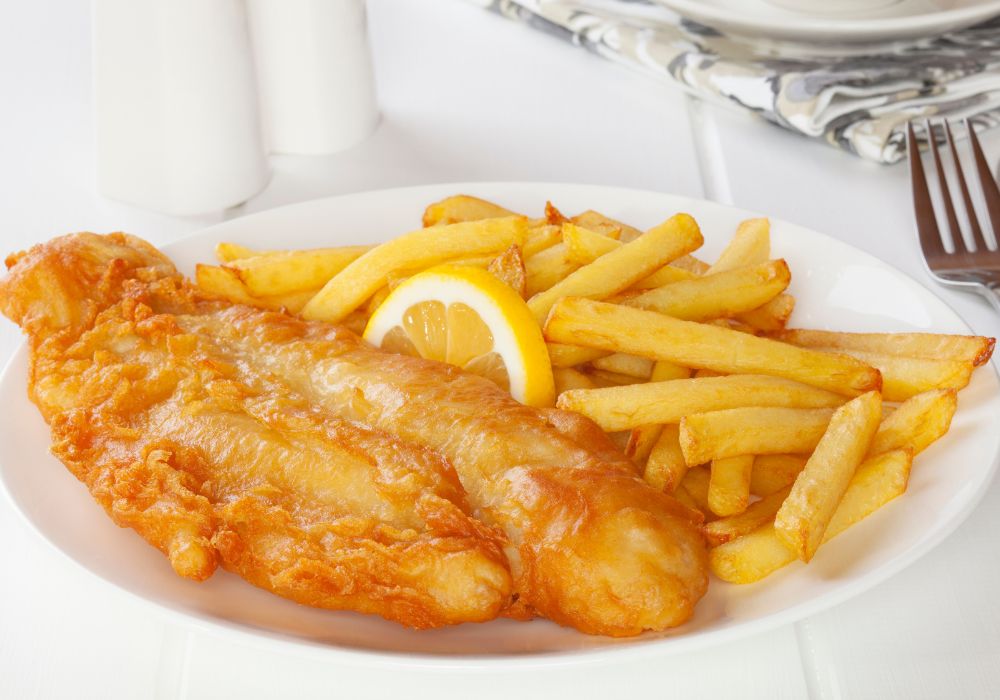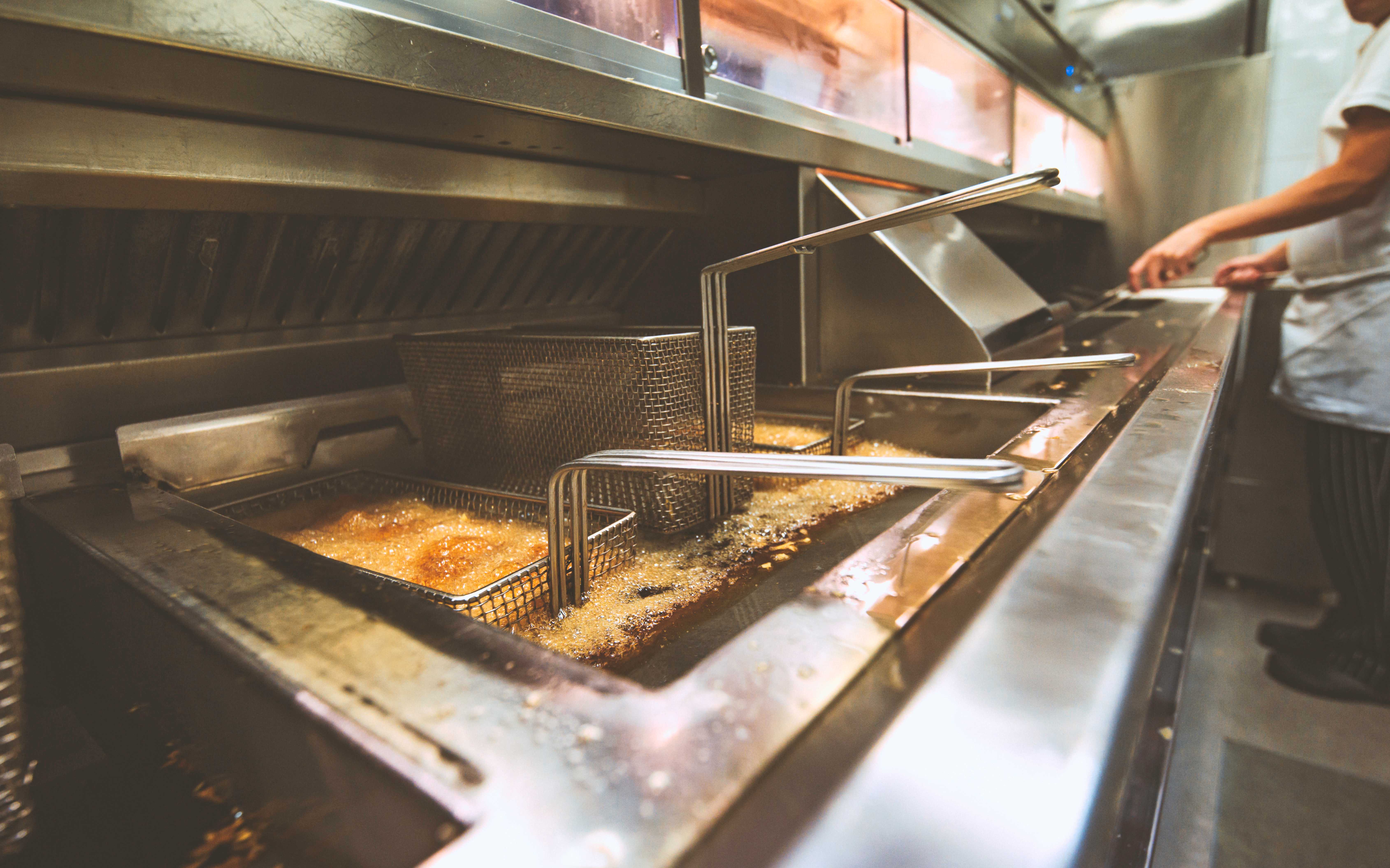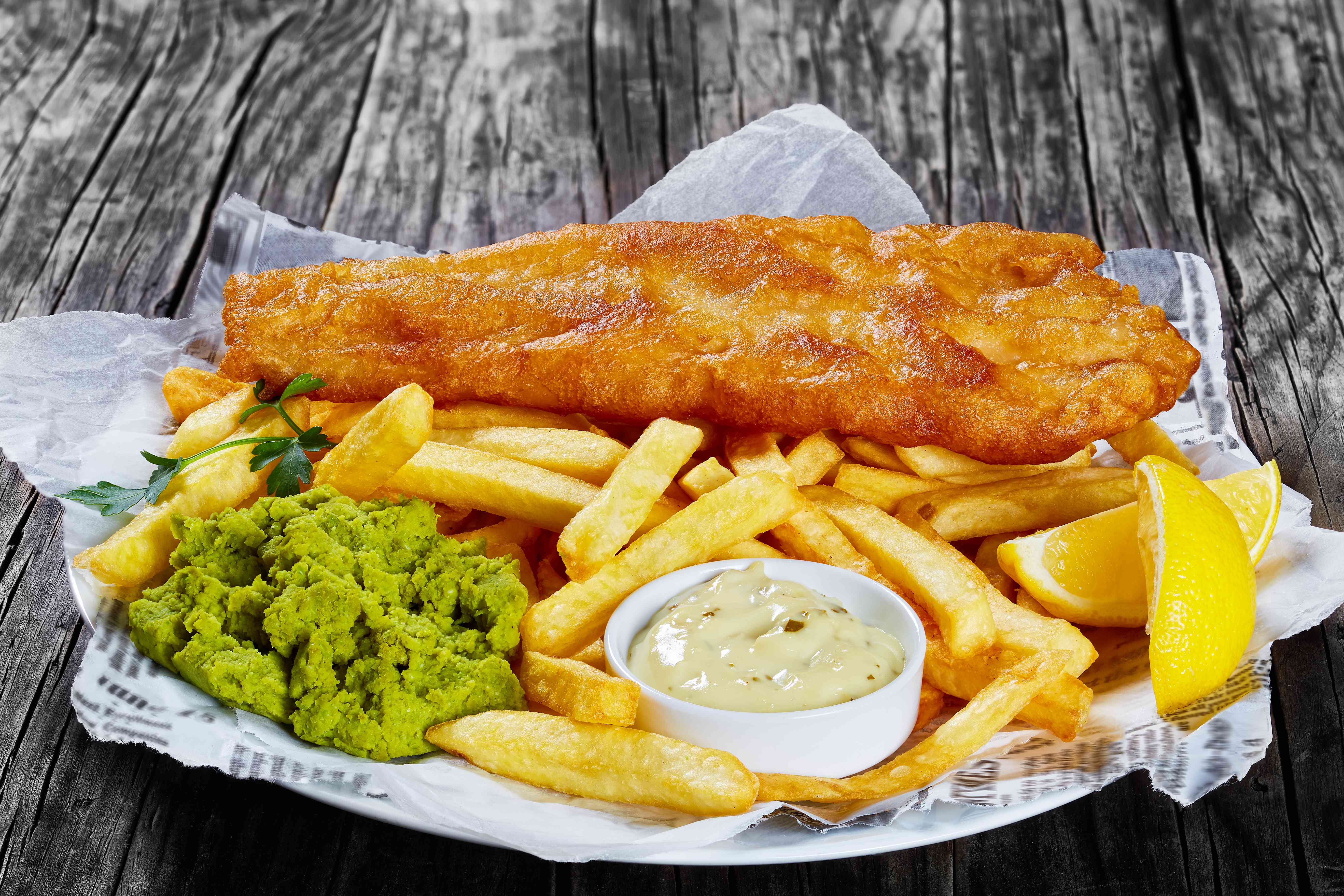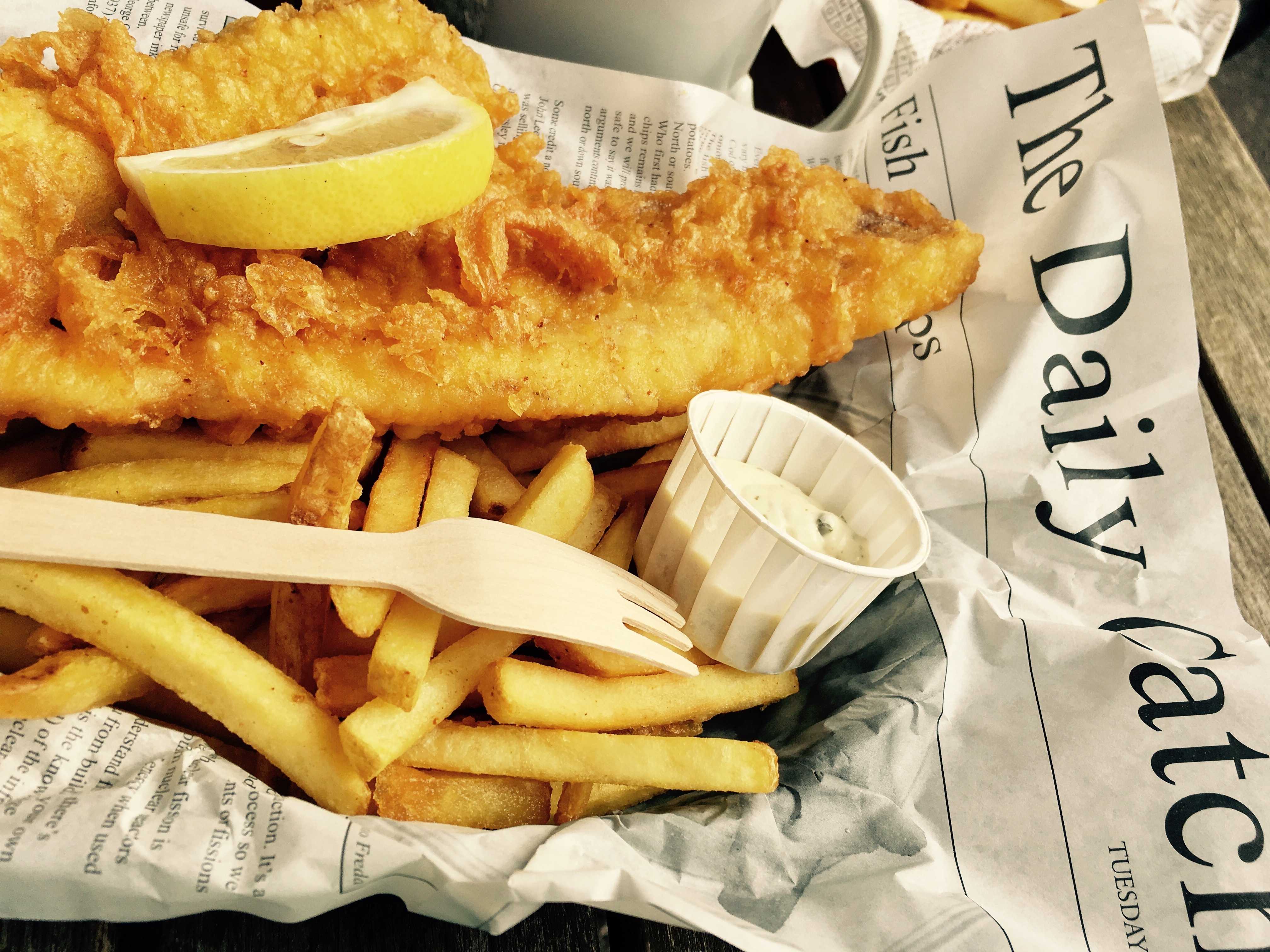Indulging in a plate of fish and chips isn’t just a meal; it’s a quintessential British culinary experience. While mastering the art of making fish and chips brings unparalleled satisfaction. From selecting the freshest fish to mastering the perfect fry, Frymax dives into what makes fish and chips truly exceptional.
Best Types of UK Fish
When it comes to fish for fish and chips, opt for thick, white fillets that can withstand the frying process without falling apart. Classic choices include cod, haddock, and pollock, each offering a mild flavour and firm texture that marries perfectly with the crispy batter.
Best Types of UK Potatoes
For authentic British-style chips, choose floury potatoes with a high starch content, such as Maris Piper or King Edward. These varieties yield fluffy interiors and crispy exteriors when fried, creating the perfect chip texture even when making triple cooked chips.
How to Select the Freshest Fish
When purchasing fish for fish and chips, look for fillets with firm flesh, shiny skin, and a fresh, sea-like smell. Avoid any signs of discolouration, sliminess, or strong odours, as these indicate that the fish is not fresh.
Cooking Equipment You Need
To make fish and chips, you’ll need basic kitchen equipment, including a deep-fryer or large, deep saucepan for frying, a sharp knife for cutting the potatoes, and a wire rack or paper towels for draining the cooked food. Additionally, a thermometer is essential for monitoring the oil temperature to ensure crispy, evenly cooked results.
Best Oil to Choose
For frying fish and chips, choose sustainable palm oil, prized for its high smoke point and neutral flavour profile. This oil is the best oil for deep frying, as it can withstand the high temperatures required for deep frying without imparting any unwanted flavours to the food, resulting in crispy, golden perfection every time.
The Best Fish and Chips Recipe for Your Restaurant or Chippie
Nutritional Information:
Per Serving (1 fish fillet with chips)
- Calories: 701
- Fat: 20g
- Carbohydrates: 72g
- Protein: 54g
Prep Time: Approximately 30 minutes to 1 hour (including resting time for the batter)
Cook Time:
- Par-cooking the chips: 3 to 4 minutes
- Frying the chips: About 5 minutes per batch
- Frying the fish: 6 to 8 minutes
- Total Cook Time: Approximately 15 to 20 minutes (excluding resting time for the batter)
Ingredients:
- 7 tablespoons (55 grams) plain flour
- 7 tablespoons (55 grams) corn-starch
- 1 teaspoon baking powder
- Fine salt, to taste
- Pepper, to taste
- Sea salt, to season
- 1/3 cup cold dark beer
- 1/3 cup cold sparkling water
- 4 200g thick, white fish fillets
- 2 pounds potatoes, peeled
- Palm oil for frying
Method
- Set aside 2 tablespoons of all-purpose plain flour. In a large bowl, mix the remaining 5 tablespoons all-purpose flour with 7 tablespoons corn-starch and 1 teaspoon baking powder. Season lightly with table salt.
- Using a fork, continuously whisk in 1/3 cup cold dark beer and 1/3 cup cold sparkling water until you have a smooth batter with a “double cream” consistency. Place the batter in the fridge to rest for 30 minutes.
- Meanwhile, cut peeled potatoes into slices less than 1/2-inch thick, then slice these into 1.5cm wide sticks. Rinse the chips under warm water, then place them in a saucepan of cold water. Bring to a gentle boil, then simmer for 3 to 4 minutes.
- Drain the chips, transfer to a paper-towel-lined plate, then pat dry with paper towels. Keep in the fridge covered with paper towels until needed.
- Lay the fish fillets on a paper towel and pat dry.
- Heat about 3 inches of sustainable palm oil to 200°C in a deep-fryer or large, deep saucepan. Par-cook the chips in batches in the oil for about 2 minutes (do not brown them). Remove the chips from the oil and drain on paper towels and set aside. Here are some tips on how to prevent splatter when deep-frying.
- Place the reserved flour in a shallow bowl and add the pepper to gently flavour. Toss each fish fillet in the flour and shake off any excess. Dip into the batter, coating the entire fillet.
- Position a rack in the centre of the oven and heat to 90°C. Line a rimmed baking sheet with paper towels. Bring the oil temperature back to 200°C. Carefully lower each fillet into the hot oil. Fry until the batter is crisp and golden, turning the fillets evenly and frequently, for 6 to 8 minutes.
- Remove the fillets from the oil to the paper-towel-lined baking sheet. Sprinkle lightly with sea salt and transfer to the oven to keep warm.
- Heat the oil to 200°C, then cook the chips in batches until golden and crisp, about 5 minutes. Remove from the oil and drain. Season with sea salt.
- Serve immediately, accompanied by your favourite condiment.
Ways to Adapt Your Recipe
To accommodate dietary preferences and flavour preferences, consider adapting your fish and chips recipe in various ways. For gluten-free options, use gluten-free flour and breadcrumbs for the batter, or skip the batter altogether and opt for a simple seasoned coating.
Additionally, experiment with different spice and herb mixes to add flavour to the batter, such as smoked paprika, garlic powder, or chopped fresh herbs like parsley and dill. You can also draw inspiration from different cuisines by incorporating ingredients like curry powder, chilli flakes, or citrus zest for a unique twist on classic fish and chips.
How Long Should I Fry the Fish and Chips For?
The frying time for fish and chips can vary depending on the thickness of the fish fillets and the size of the potato chips. In general, fry the fish until the batter is crisp and golden, which usually takes about 6 to 8 minutes. For the chips, fry them until they are golden and crispy, which typically takes about 5 minutes for each batch.
Can I Bake the Fish and Chips Instead of Frying Them?
While traditional fish and chips are deep-fried for that signature crispy texture, you can bake them as a healthier alternative. Arrange the battered fish fillets and potato chips on a baking sheet lined with parchment paper, lightly coat them with cooking spray, and bake in a preheated oven at 220°C until golden and crispy, flipping halfway through cooking.
How Can I Keep the Fish and Chips Warm While Frying in Batches?
To keep the cooked fish warm while frying in batches, place them on a wire rack set over a baking sheet and keep them in a preheated oven set to a low temperature, around 90°C. This will help maintain their crispiness and prevent them from becoming soggy.
Alternatives to Traditional Tartar Sauce for Serving with Fish and Chips
While tartar sauce is the flagship accompaniment to fish and chips, you can also serve them with other sauces or condiments for variety. Consider options like malt vinegar, ketchup, mayonnaise, lemon wedges, or aioli flavoured with garlic and herbs.
How to Prevent the Batter from Becoming Soggy
To prevent the batter from becoming soggy, ensure that the fish fillets are thoroughly dried before dipping them in the batter. Additionally, make sure the oil is heated to the correct temperature before frying, as frying at too low a temperature can result in soggy batter. Finally, avoid overcrowding the fryer or pan, as this can lower the oil temperature and cause the batter to absorb excess oil.
Can I Use Different Types of Fish for Fish and Chips?
Yes, you can use different types of fish for fish and chips, depending on your preferences and availability. While cod, haddock, and pollock are traditional choices, you can also use other firm, white fish such as halibut, hake, tilapia, or sea bass. Just ensure that the fish fillets are thick and suitable for frying.
How Do I Know When the Fish is Cooked Through?
You can tell when the fish is cooked through by its appearance and texture. The batter should be golden brown and crispy, and the fish should be opaque and flaky when tested with a fork. Additionally, the internal temperature of the fish should reach 167°F (75°C) to ensure that it is fully cooked.
Can I Make Fish and Chips Without Beer in the Batter?
Yes, you can make fish and chips without beer in the batter. While beer adds flavour and helps create a light, airy texture, you can substitute it with other carbonated liquids such as sparkling water or soda water. Alternatively, you can omit the beer altogether and use cold water or milk for a simple batter.
How Can I Make Healthier Fish and Chips?
To make healthier fish and chips, consider baking or air-frying the fish and chips instead of deep-frying them. You can also use whole wheat flour or panko breadcrumbs for the batter to add fibre and reduce the overall calorie content. Additionally, serve the fish and chips with a side of steamed vegetables or a mixed green salad for added nutrition.
Frymax Palm Oil – the Oil of Choice for Deep-fried Perfection, Every Time
Frymax has been the UK’s largest supplier of frying oil to fish and chip shops and other food outlets and restaurants since 1954. And our oil doesn’t just give you the best results every time you heat up the frying pan, it’s the best choice for sustainability too. Since 2013, Frymax oil has been made from fully-segregated, RSPO-certified palm fruit oil. Not a drop of non-certified oil goes into the production of Frymax. Chippies, food truck owners, and restaurateurs can rest assured that, when they choose Frymax, they are supporting sustainable, ethical palm oil production. For more information don’t hesitate to get in contact with the helpful Frymax team.
Become a Frymax member today to gain access to exclusive content, expert frying advice and the chance to enter our fantastic competitions.






